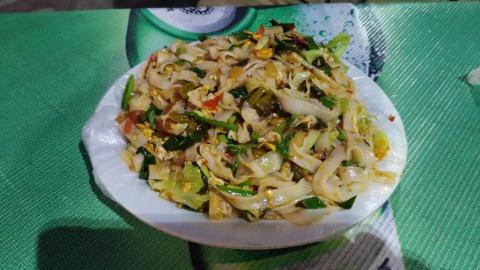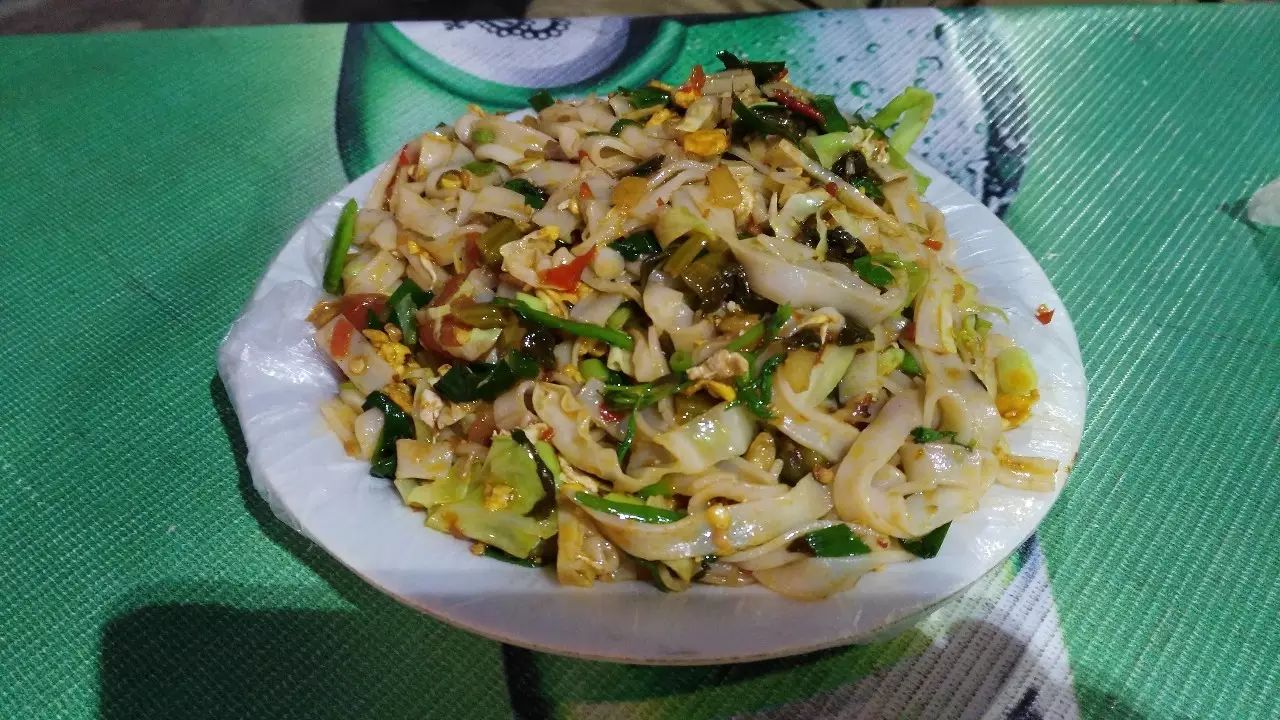
Because I yearn for the warm sunshine in winter and the blue sky without haze, I have long planned to visit the South of Colorful Clouds during the Spring Festival, the coldest day of winter. This is the third time we have set foot on this red soil.
I visited three places this year, Kunming, Xishuangbanna, and Tengchong. After half a month, I feel that Yunnan’s food is very unique and more appetizing, so it is worth recommending.
(1) Rice noodles and rice noodles
Kunming can be said to be the kingdom of rice noodles. Kunming people can probably eat it from breakfast to dinner. There are many kinds and different ways to eat them, mainly due to the wide variety of dipping and toppings. Just eating alone is much more particular than other provinces. Alas, in order to eat, it was too complicated, and my stomach couldn't bear it.
Xishuangbanna also has something similar to Hunan's fresh wide rice noodles. It's called rice noodles here. (from Xishuangbanna)


There is a special snack in Tengchong called Dajiujia, which is also a common snack. I found the origin of this in the museum, it is actually fried rice noodles:

(2) Dai flavor
Xishuangbanna is a Dai Autonomous Prefecture. The food is mainly Dai style. Very different from Han Dynasty. The staple food is mainly made of glutinous rice. Bamboo tube rice, pineapple rice, etc. are common street snacks.
People in Xishuangbanna like to eat barbecue the most. The Dai flavor is mainly barbecue. Lemongrass grilled fish (tilapia or crucian carp) and grilled chicken are supplemented with various spices and lemon.
A variety of delicious BBQ:

Like the lemongrass grilled fish below, although it looks inconspicuous, the fish is filled with various spices and does not have the strange smell of daily barbecue. Instead, it fully brings out the aroma of the fish. It can be regarded as a typical one here. Here's how to do it:

When I was in Xishuangbanna, I stayed in a hotel by the Lancang River. The row of blue and green below is the riverside night market, which is definitely a paradise for barbecue lovers:

This is grilled moss (moss from the riverside), which sounds strange, but it’s delicious mixed with glutinous rice:

Baoshao is a common practice. The fried vegetables are wrapped in banana leaves and soaked in the fragrance of bananas. It is a bit like the use of palm leaves during the Dragon Boat Festival in the Mainland. Plantain is closely related to people's lives here, and fried plantain flowers are also commonly eaten.

Nanmi is also unique here. It can be said to be a kind of hot sauce, but it is rich in ingredients, including tomatoes and various unknown spices, and has a special taste:

Lemon jelly:

Pounding papaya:

There are millet peppers in it, and the more you eat, the spicier it gets. My stomach was burning that day.
Pauluda: a famous dessert from Myanmar and Thailand. A clever combination of coconut milk, dry bread, and pearl dumplings. Very common in Xishuangbanna. We ate at a bar in Tengchong, and it felt quite authentic and delicious. In Kunming, it’s very copycat.

(3) Tengchong characteristics
The food here has strange names and food. The great rescue mentioned earlier is actually fried rice noodles.
Roasted Pork in Brown Buns: This dish is fried palm tree flowers. It’s delicious. It also uses less oil when cooking, so it’s healthier:

Earthen pot: heated with charcoal.

Characteristic brain: It is roughly a mixture of sweet wine and salty meat. It is said to be closer to Cantonese style.

Tonglao beef comes from Baoshan. It's basically a charcoal-heated beef hot pot. The beef that has been cooked for a long time is very solid and the ingredients are very particular. Later I learned that it is a Muslim diet.
If you are in Atami Hot Spring in Tengchong, then eat steamed buns steamed with hot spring water:

Or the eggs you cook yourself in the hot springs have a unique flavor and are really delicious.

(4) Vegetarian food in Kunming
In Kunming, there are many vegetarian restaurants like Pixel Jixiang. The ingredients are fresh and the vegetarian dishes are cooked with their own fragrance, unlike some vegetarian restaurants that only rely on seasonings:

(5) Tropical fruits
This is the tropics, so there are naturally a lot of fruits. The size is staggering. Juice on the street is as common as mineral water. A huge avocado, but not expensive:

In short, Yunnan cuisine is very unique. It is not as oily as Sichuan cuisine and pays more attention to the freshness of the ingredients. There are many kinds of seasonings used in home-cooked dishes, including wild vegetables, medicinal materials, spices, etc. Lemon mint is very commonly used. There were also foreign objects such as bamboo worms, silkworm chrysalises, and ants, but I didn’t dare to try them.
